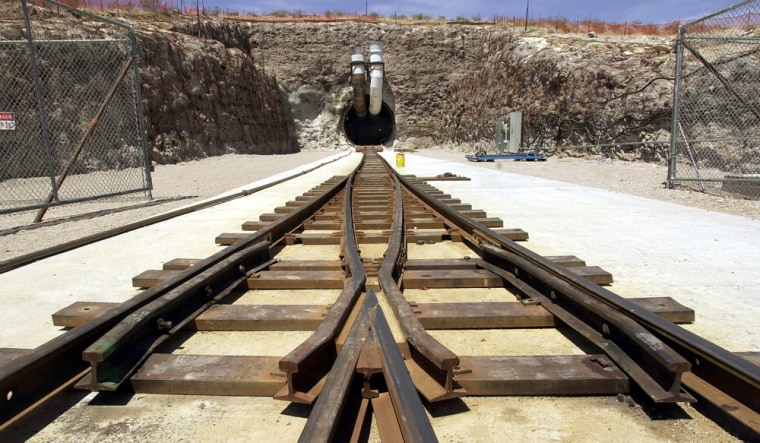The Environmental Protection Agency will issue a final rule by the end of the year on how much radiation can be released from the Yucca Mountain nuclear waste dump, an agency official told senators at a hearing Wednesday.
William Wehrum, acting assistant administrator of EPA's office of air and radiation, defended the agency's proposed rule against criticism from Nevada lawmakers and a Democratic senator from California who said it wouldn't adequately protect human health.
"Our job at EPA is to set standards for the Yucca Mountain repository that are fully protective of human health and safety," Wehrum said at a Senate Environment and Public Works Committee hearing.
He received strong support from the committee's chairman, Republican Sen. James Inhofe of Oklahoma, who asked whether the rule might be "too conservative" compared with approaches taken in Europe. Wehrum said the standard was consistent with international approaches.
Store more there?
Inhofe also said after the hearing that he'd be open to voting to increase the storage capacity of Yucca Mountain, which by law is supposed to hold 77,000 tons of radioactive waste. Because of waste already waiting at reactor sites nationwide, the repository will be full soon after it opens.
Spent fuel from U.S. nuclear plants — which supply about 20 percent of U.S. electricity — is piling up. More than 50,000 tons of it is stored at over 100 temporary locations in 39 states.
The EPA in August proposed limiting radiation exposure near the planned dump 90 miles northwest of Las Vegas to 15 millirems a year for 10,000 years, then increasing the allowable level to 350 millirems a year for up to 1 million years.
That higher level is more than three times what is allowed from nuclear facilities today by the Nuclear Regulatory Commission. A standard chest X-ray is about 10 millirems.
The EPA issued the rule under consideration after a federal court said the agency's first standard was inadequate because it didn't establish exposure limits beyond 10,000 years. A public comment period for the rule ended Nov. 21, and the agency is reviewing comments and will finalize the rule by year's end, Wehrum said.
Weighing radiation risks
Nevada Sens. Harry Reid and John Ensign criticized the standard. Ensign, a Republican, called it "a farce."
Reid and Ensign have instead proposed handling nuclear waste through “dry cask storage,” a process that would allow nuclear reactors to store waste on-site.
Sen. Barbara Boxer, D-Calif., cited a study that she said showed cancer risks at the 350 millirem level increasing to one in four for women and one in five for men.
"This is such a nightmare that we're abandoning ... what we consider to be an acceptable cancer risk," Boxer said.
But a scientist who testified before the committee, Dade Moeller, former president of the Health Physics Society, said his estimates show a smaller increase of cancer risk under the proposed rules — perhaps 1 percent or less. Moeller's company has done contract work for the Energy Department.
The radiation issue and other problems with the project have caused a series of delays. The Energy Department originally was supposed to submit its application for a license to operate the dump to the Nuclear Regulatory Commission by December 2004.
Paul Golan, acting director of the department's Office of Civilian Radioactive Waste Management, couldn't provide senators a new date but said the department would release a schedule this summer.
